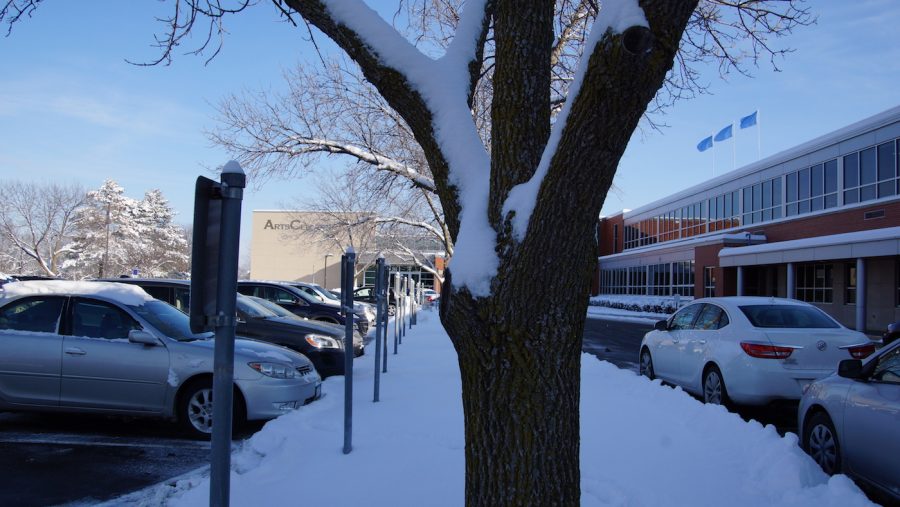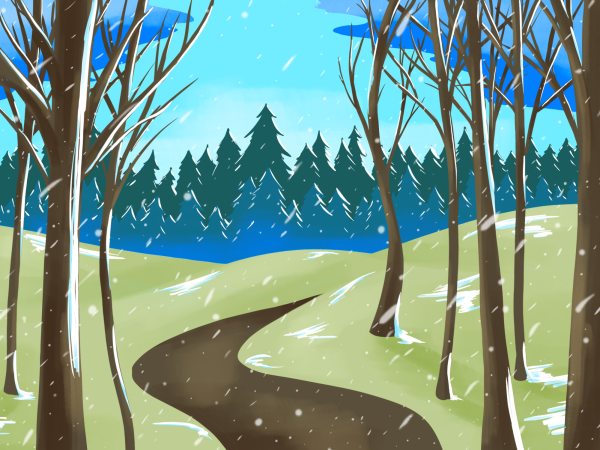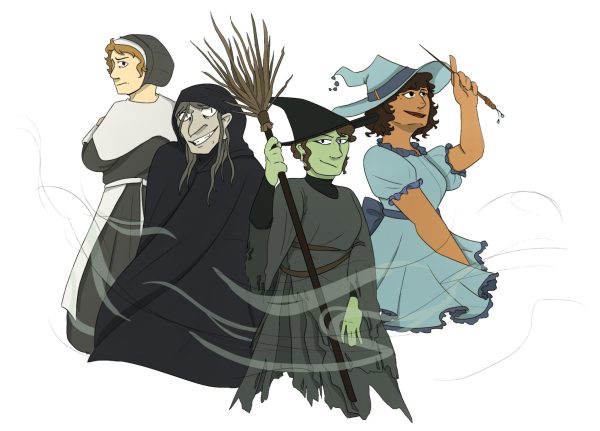Climate Change in 2016: What happened?
What’s new this year and what are the attempts made to derail it?
Snow falls on tree in the parking lot outside of Main Entrance.
December 22, 2016
At this point in history, it seems the only things we can be sure of are death, taxes, and a climate that never stays the same. The warm El Niño weather pattern is fading, bringing cool temperatures again. Although, “cool” is an understatement when you live in Minnesota and have to wear your winter coat the entire school day.
The thermometer may be dropping precariously low, but climate change continues to merit international attention. It’s been a topic of discussion since the late 1900s, and greenhouse gases were known as far back as the 19th century. Despite its age, the issue is only gaining relevance. Moreover, there’s still incredible controversy surrounding the theory’s legitimacy and how to address it. One article in a high school newspaper can’t encompass even a fraction of what needs to be said, but hopefully it’s enough to incite some discussion and bring a little more awareness to MHS, since right now our world has to make choices that will likely have repercussions for our entire lives.
A quick refresher: the definition of climate is “a change in global or regional climate patterns, in particular a change apparent from the mid to late 20th century onwards and attributed largely to the increased levels of atmospheric carbon dioxide produced by the use of fossil fuels.”
According to NASA, climate change means (can you say it in one breath?): rising temperatures, changing weather patterns (shifting precipitation, hot dry spells), rising sea levels (1-4 ft), warmer oceans, acidified oceans, shrinking ice, retreating glaciers, less snow (which can be good for us Minnesota drivers, but decidedly bad for the Pikas) and extreme weather.
However, millennials and members of gen Z often brush it off as an unfortunate fact.
One report from Pew Research Center stated that 42% of Americans aged 18-29 care some or a great deal about climate change, while 19% don’t care very much/at all. This was lower than every other age group in the survey except ages 65+. Whether it’s because young adults are tired of hearing about global warming and fossil fuels or because people just don’t believe it is an important issue of our time is not really clear, but this means that we’re less engaged with policy, activism, and global efforts to turn climate change around.
On the other hand, we’re also the first generation to have grown up with climate change continually on our minds and in our textbooks as a (mostly) established fact. In addition, MHS viewpoints don’t necessarily reflect the larger body of Americans.
In a recent survey of MHS students, 100% answered that they believed in climate change, and when asked how important an issue it was, 75% answered 4 or 5 out of 5.
This seemingly straightforward issue isn’t so simple when viewed on a larger scale. Climate change discussion and policy is tied to the global economy, business industries with vested interests, the development of countries, government, politics, science, and Earth itself, of course.
For example, many developing countries rely on natural resources and unsustainable practices or regulations for crucial economic growth.
In the U.S., decisions on policies to counter climate change could become even more tense as the president-elect takes over office. The new presidential cabinet has a more skeptical viewpoint on climate change than the outgoing one, which could affect the direction and amount of climate change policy.
Oklahoma State attorney-general Scott Pruitt, appointed for the head of the Environmental Protection Agency, has been critical of many of the EPA’s regulations, and has sued the agency on the Clean Power Plan (which set limits on power plants for carbon pollution) among other things.
Another controversial appointment is Rex Tillerson, CEO of Exxonmobil, the largest energy company in the world, for Secretary of State. It’s uncertain how these positions will affect policy, but they’ll likely play a large part in directing our country on this issue in the next several years.
A recent controversy between environmental action and business is the clash over the $3.7 billion Dakota Access pipeline, which many– most notably the Standing Rock Sioux Tribe– protested as an environmental threat in addition to a cultural threat. It garnered national attention and was a clear manifestation of the tension between national priorities on climate change.
There is climate-conscious momentum coming from organizations and businesses alike: companies like Tesla are making electric cars and affordable, and efficient solar panels widely available. Bill Gates just invested $1 billion into energy research, and the divestment movement recently made a leap when investors worth more than $5 trillion in assets agreed to drop some or all of their fossil fuel stocks. The UN Paris Climate Change Conference in 2015 drew countries together to create a monumental international accord and set goals for sustainability around the planet.
Back in Minnetonka, climate change seems to be something that MHS does care about, but what exactly can we do about it? We’re a large public school without infinite resources, and we need to spend considerable energy on things like heat for ourselves and our banana bread. Not to mention, hundreds of students drive themselves to school each day.
Granted, we’ve made small reductions in our ecological footprint, like installing bike racks and adding Hydration Stations. And of course, many outreach and service clubs at school, as well as district groups, focus on green education and green environments.
Our generation is going to have find a balance between individual action (say, not drinking from plastic water bottles, or turning off lights) and complete school-wide and community sustainability (solar panels and energy efficiency for starters). Even though we have a limited ability to act as teenagers, we need to make sure we stay educated on the subject and don’t stop looking for a solution to climate change.






























